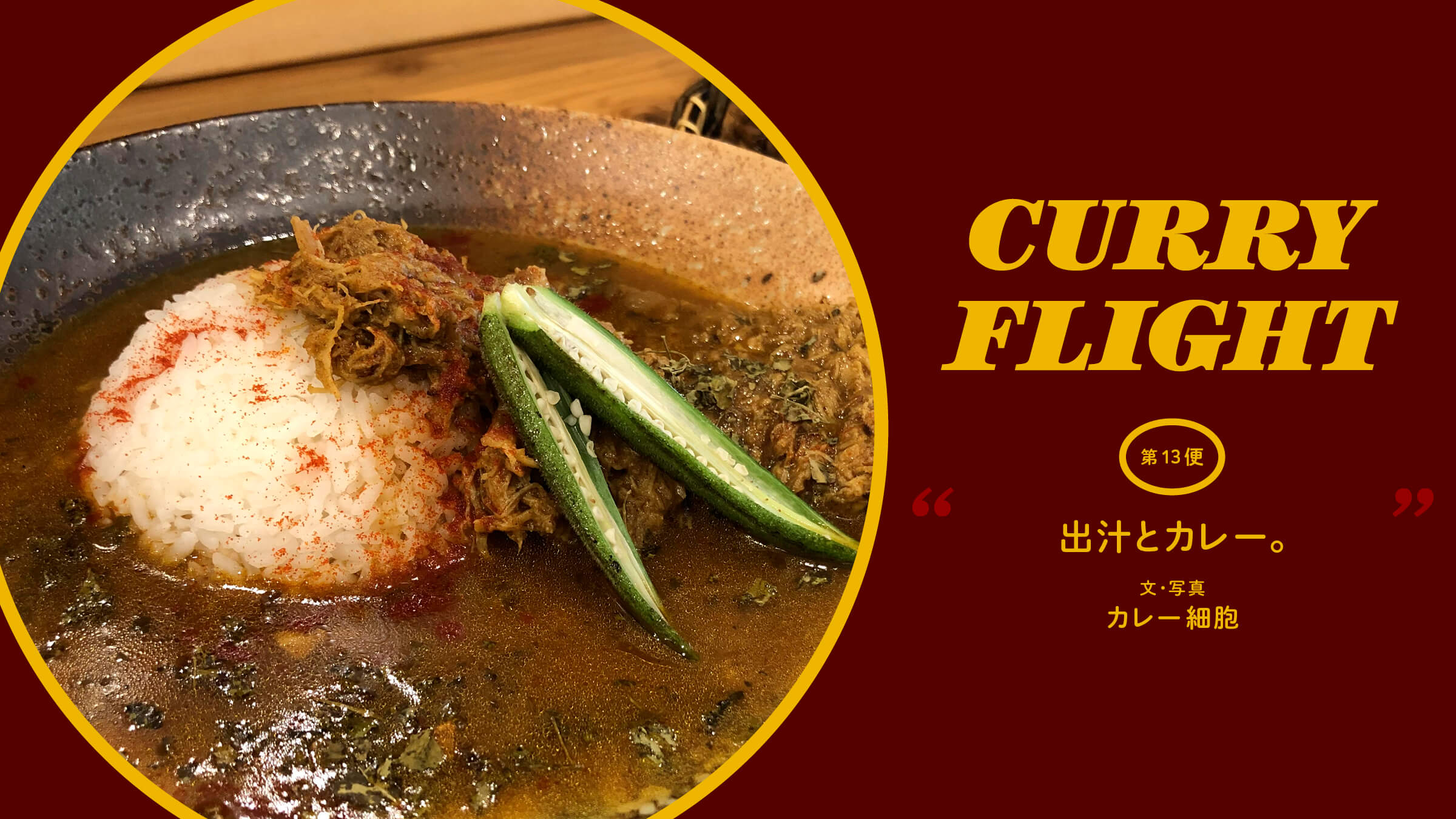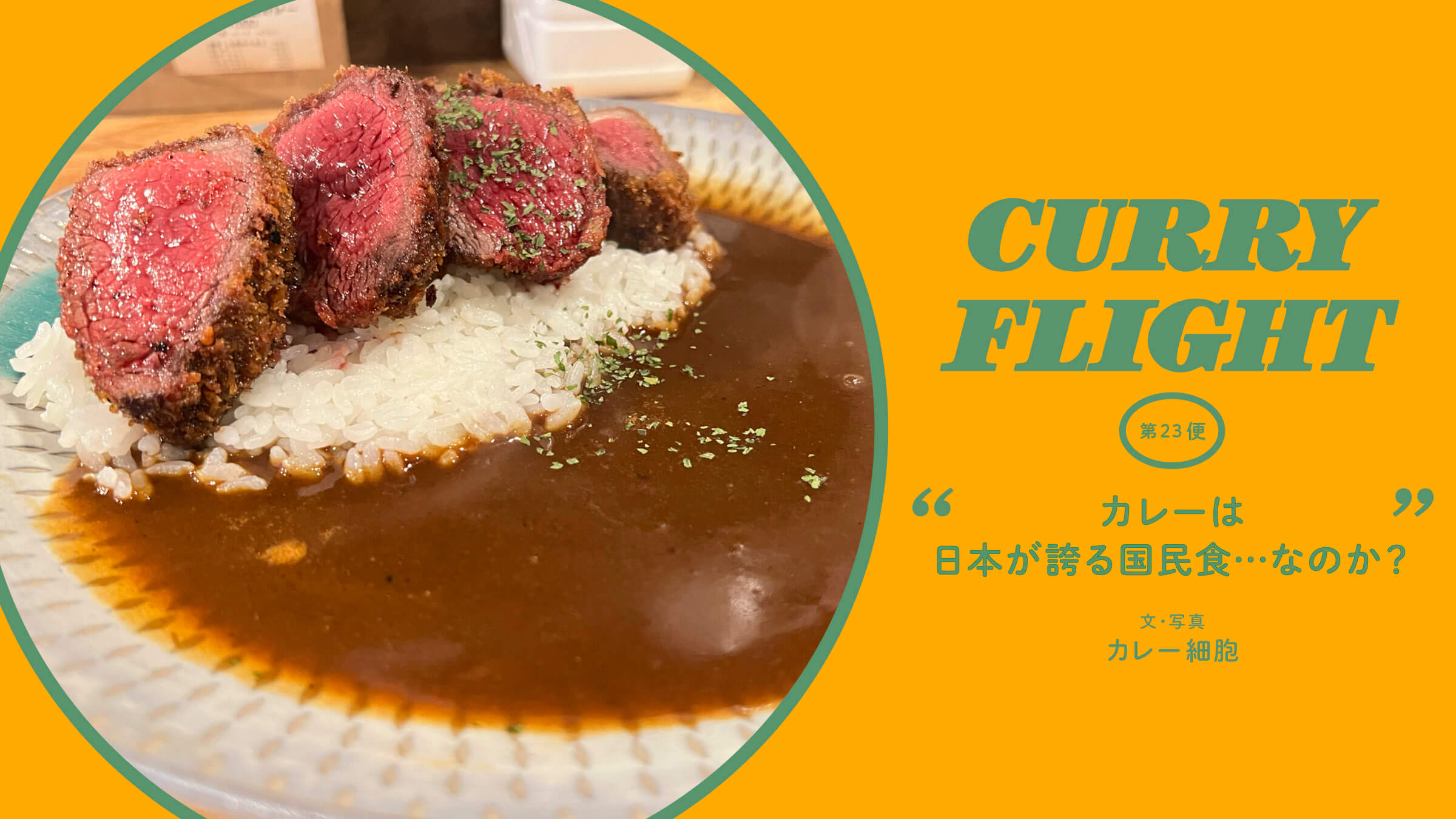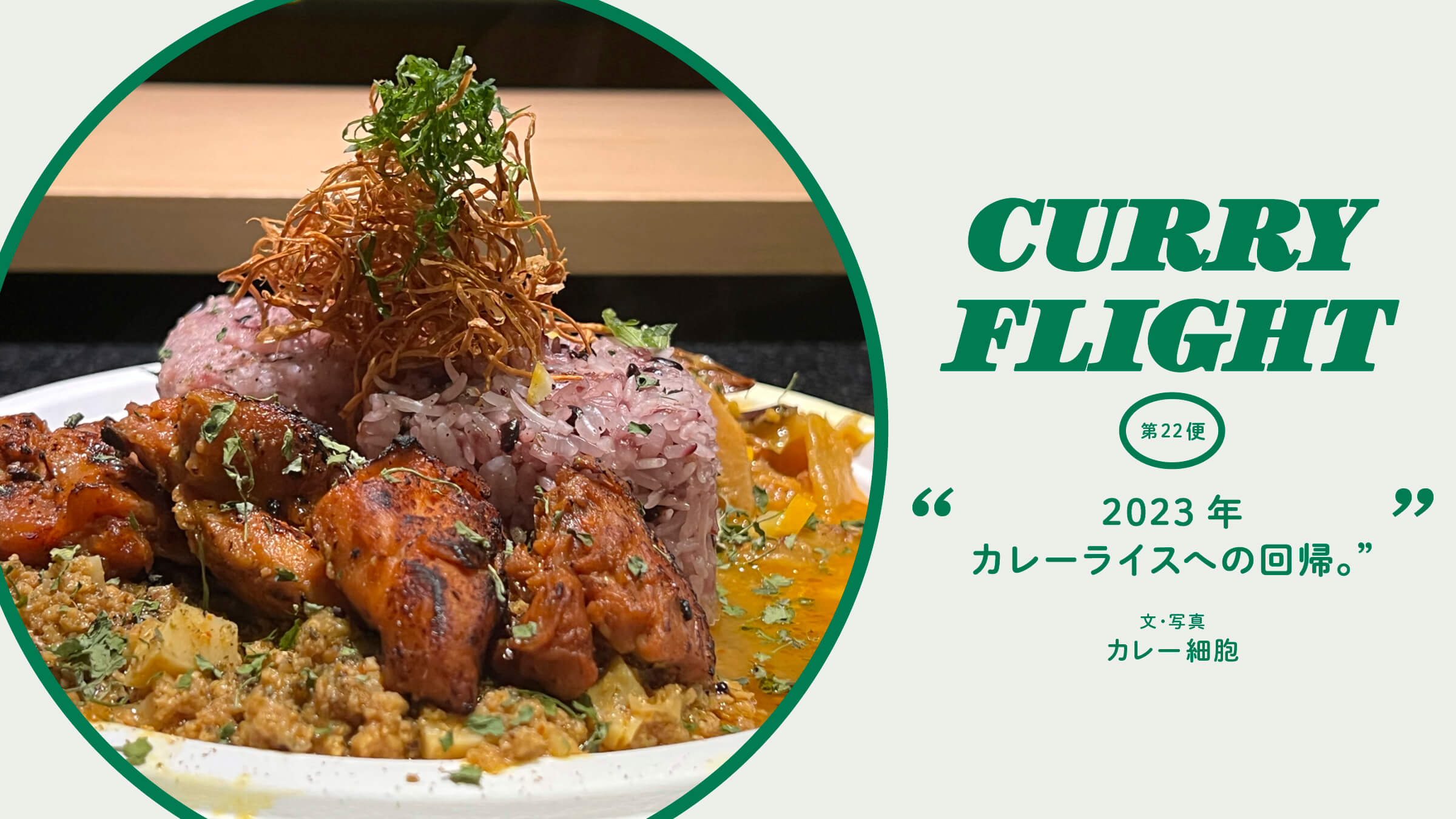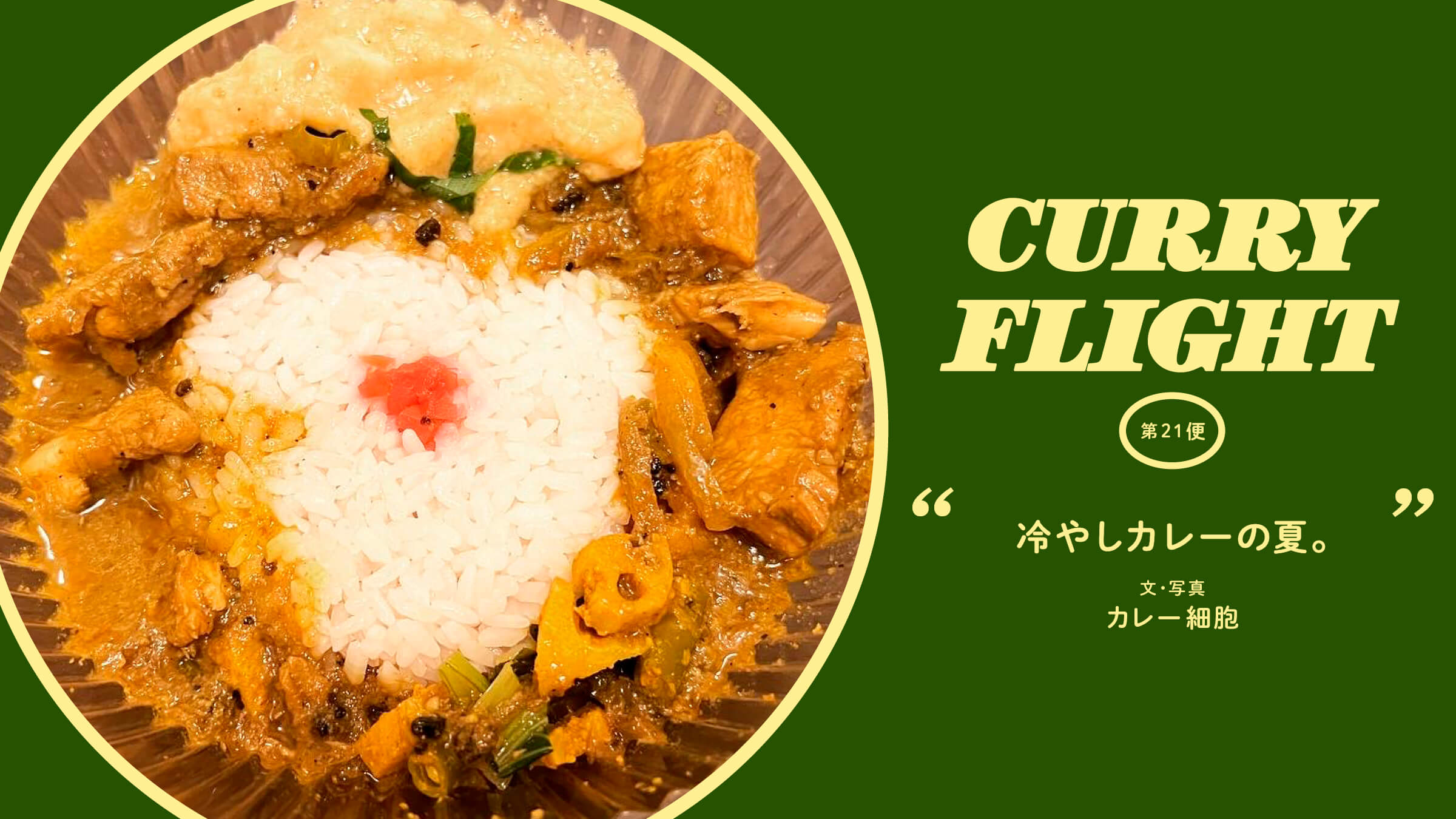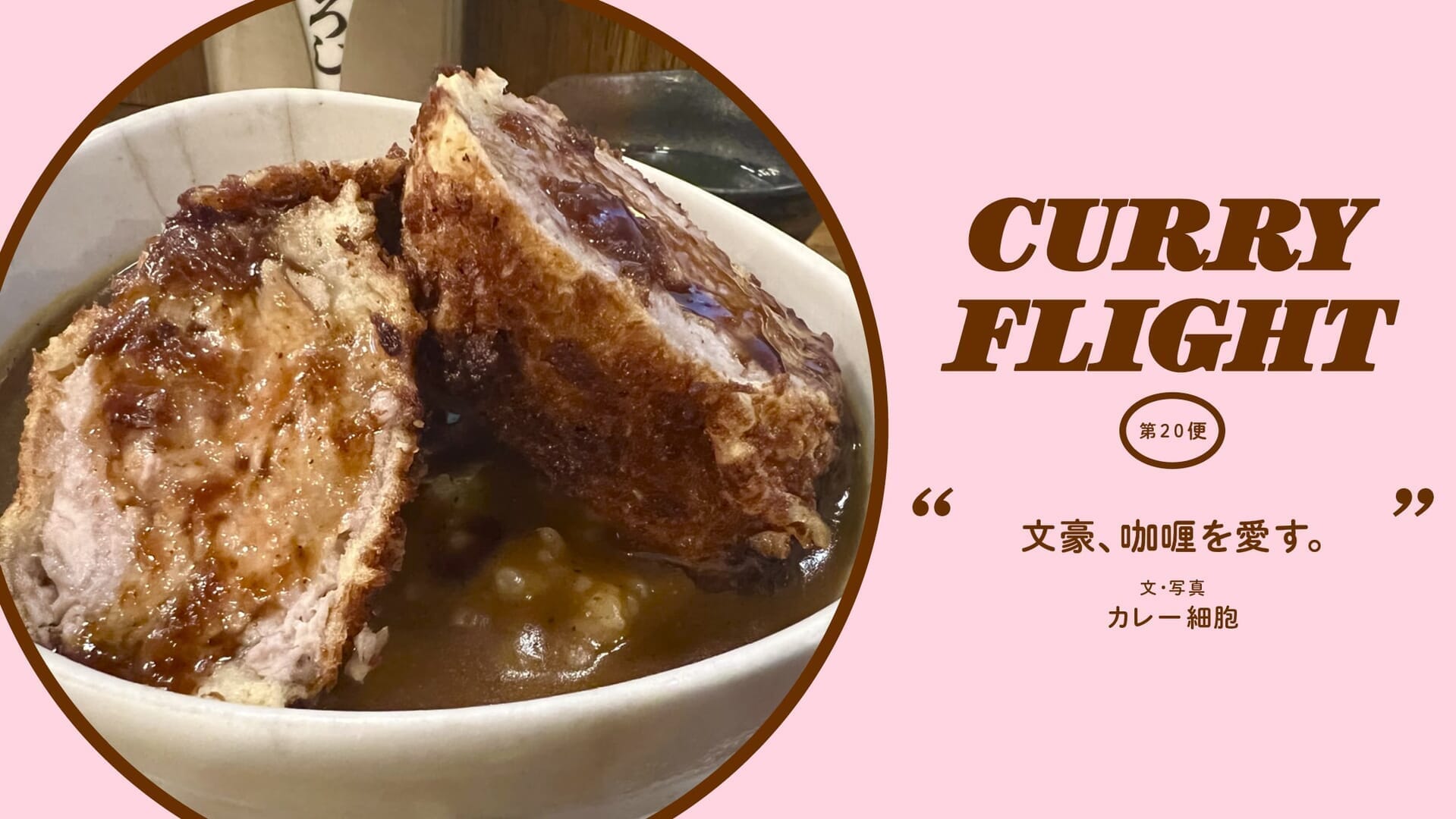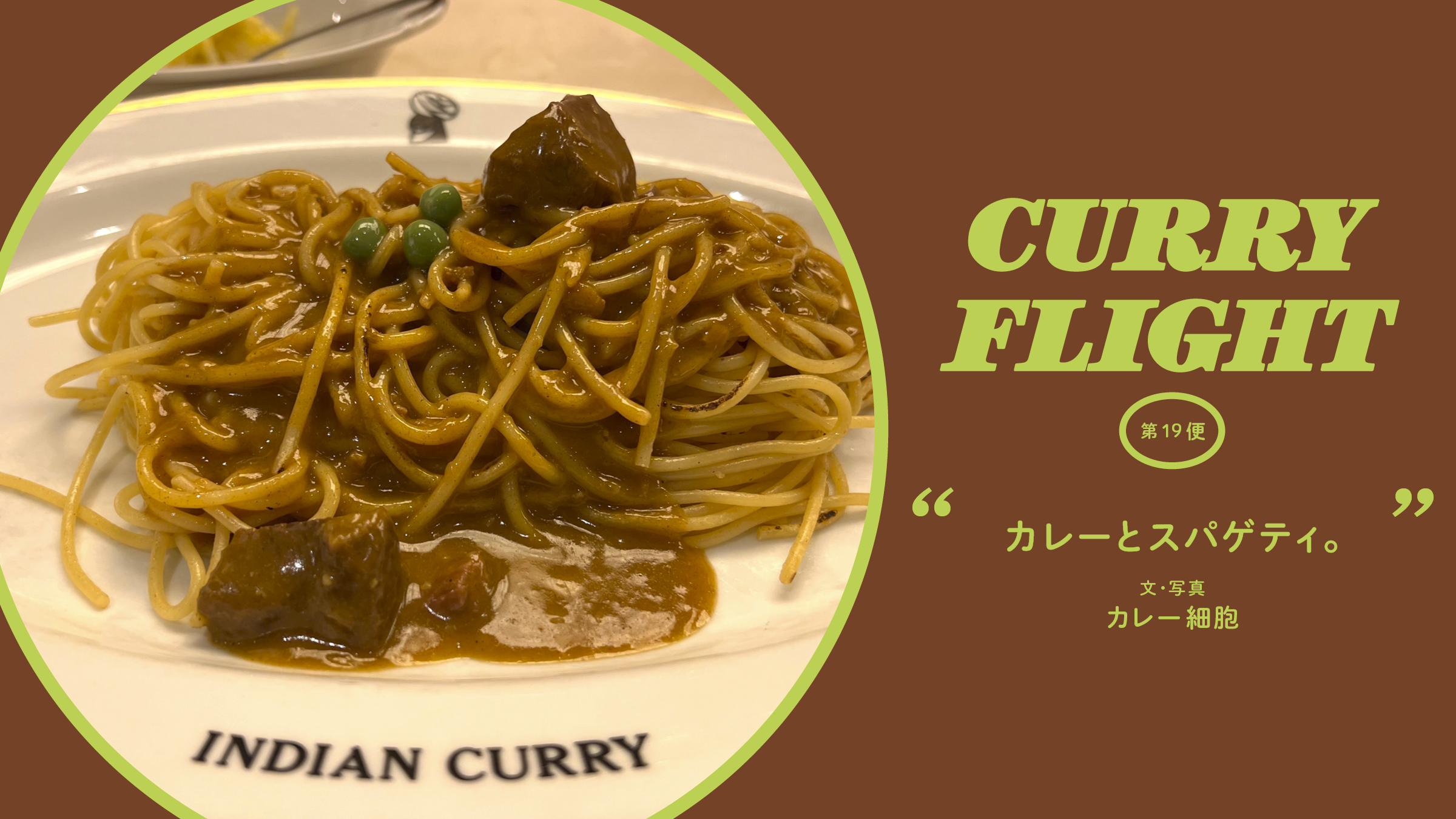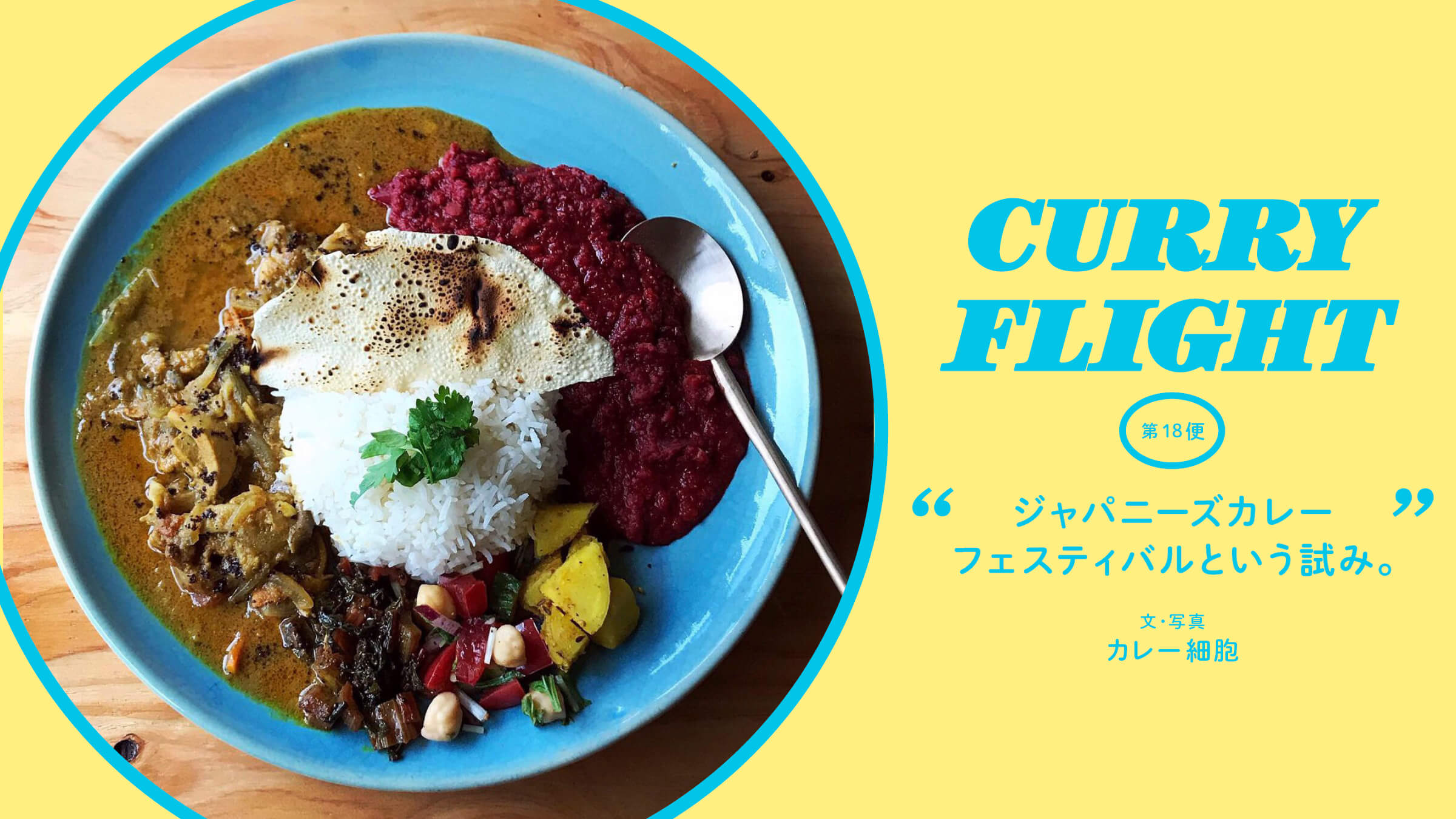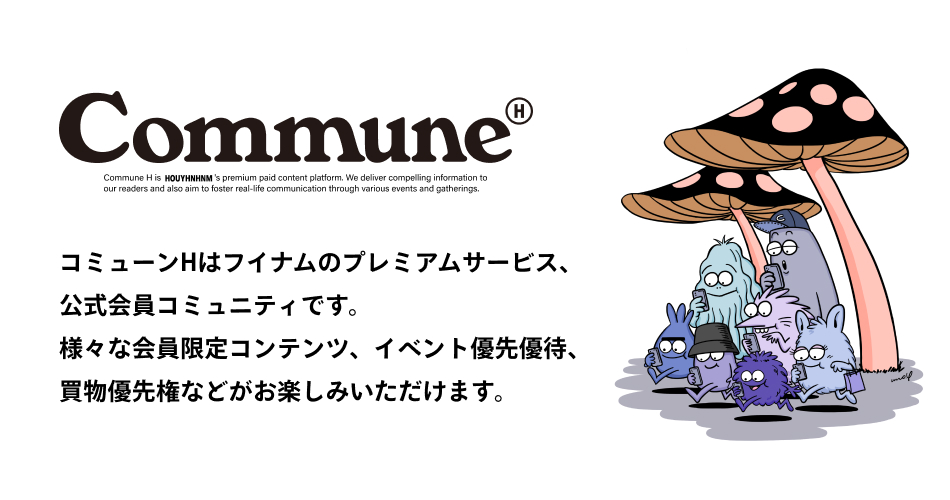Flight 13 Dashi and curry.
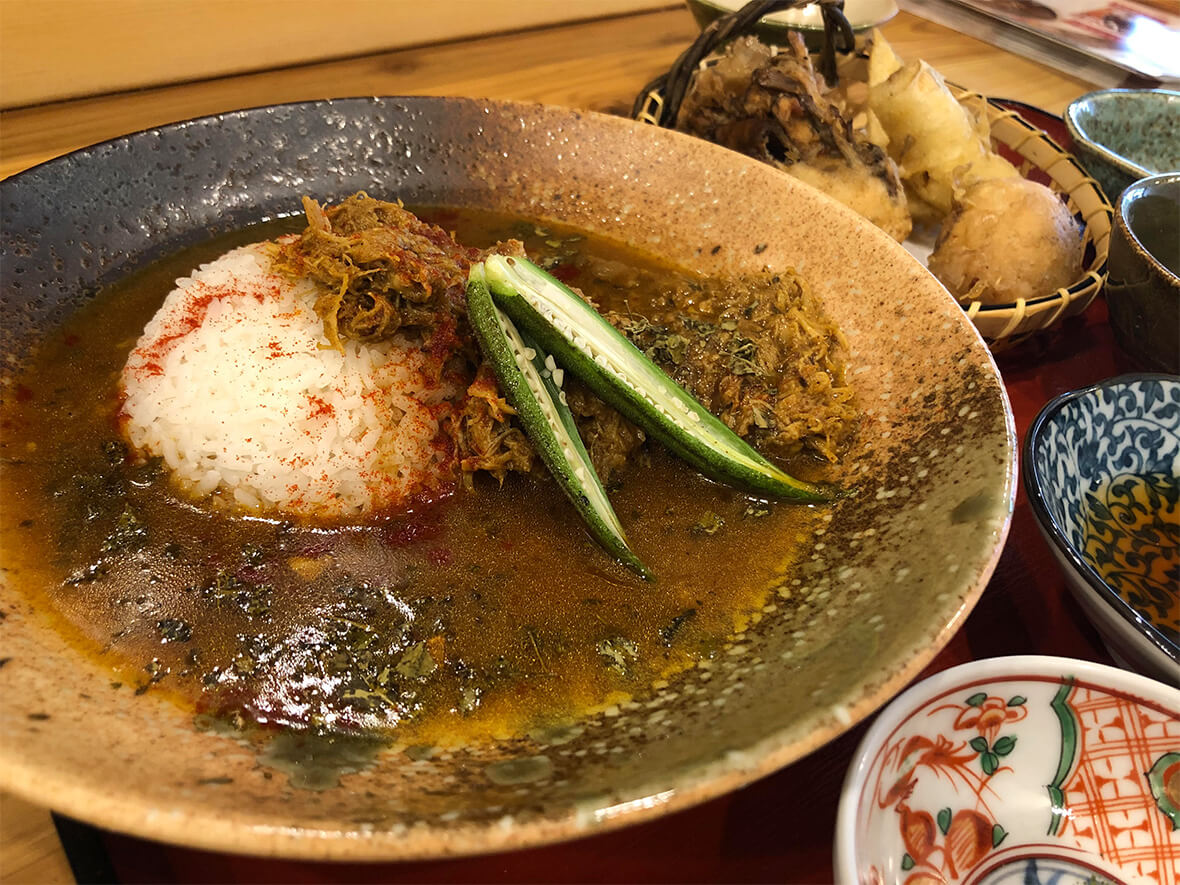
The curry world has been fusing with various food genres in the past few years.
Chinese, French, Italian, and Gelato. ......
Among these, the most natural and promising is the fusion of "dashi culture" and "curry. In Osaka's spice curry culture, "dashi (dashi broth) curry" is now considered a super standard. Let's take a look at its charms.
What is "dashi" in the first place?
Dashi" is originally an abbreviation of "nidaishiru. It is a broth made by boiling ingredients and extracting their flavor.
In addition to Japanese soup stock such as kombu dashi and bonito dashi, Chinese chicken soup, French fon and bouillon are also considered dashi, but we will deal mainly with "Japanese soup stock" here.
Dashi Curry culture has existed in Japan for a long time.
The first thing that comes to mind when one hears the words "curry with dashi broth" is probably "curry from a soba restaurant. Curry with dashi or soup stock used for soba noodles has an excellent flavor of bonito and kelp. I sometimes feel like eating it myself. Japanese people have always been picky about umami. It was a natural step to add umami to curry, which was introduced to Japan as part of Western culture.
Incidentally, curry nanban originated in the late Meiji period. There is a theory that it was called "Sanchoan" in Waseda and "Tokyo Soba" in Osaka, both of which are probably correct. It is said that at that time, the popularity of curry was causing a decrease in the number of customers to existing restaurants, and it is probably true that restaurants here and there began to introduce curry menus.
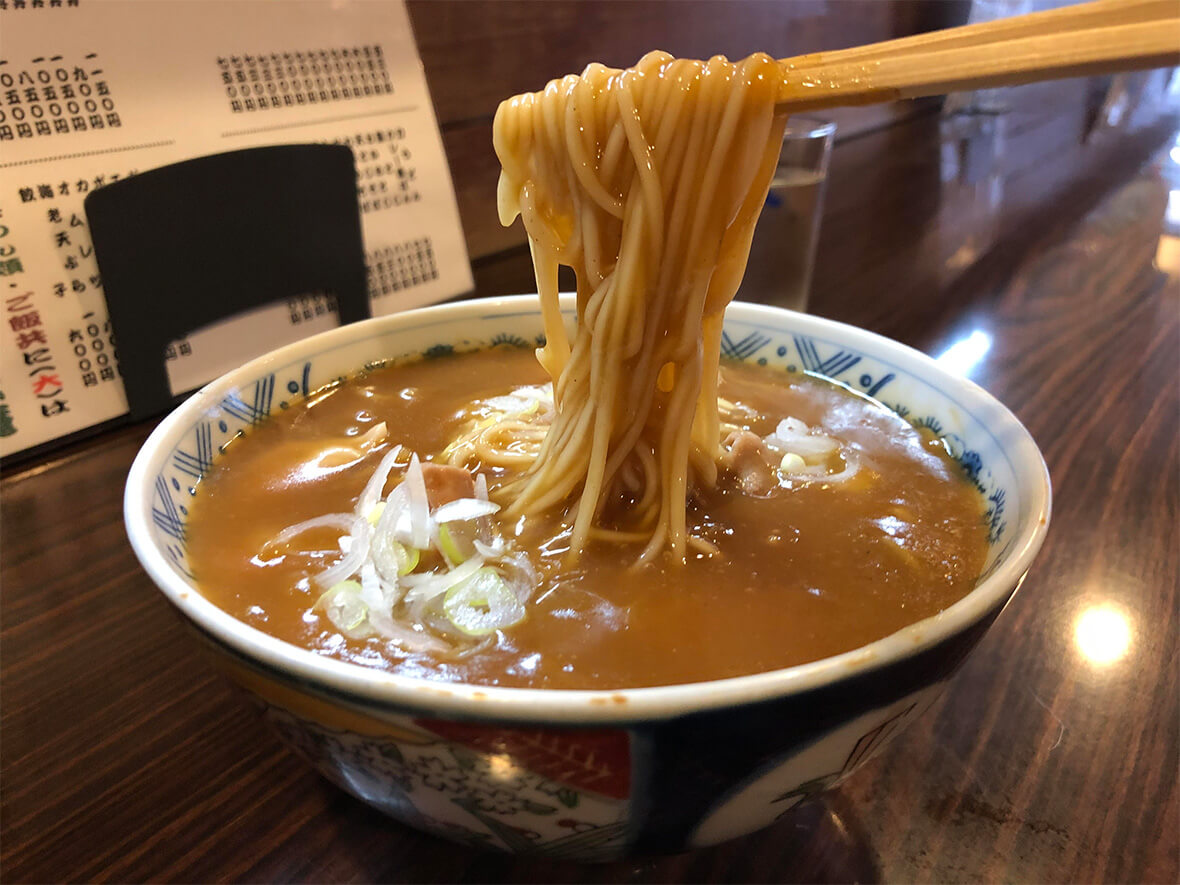
Curry Nanban Soba at Asashoan in Nakameguro, which has a wonderful broth flavor.
In addition to soba and udon, Japanese soup stock is also used in curry and rice at Peter, a long-established cafe frequented by Asakusa comedians.
Dashi Curry is taking the Osaka curry world by storm.
It is probably Osaka that has expanded the conscious effort of "dashi x curry" beyond the so-called "curry at soba noodle shops.
Osaka spice curry has been spreading slowly since the 1990s and became an explosive movement in the 2010s. As a counterculture to the existing curry and rice culture, Osaka has been producing alternative curries that incorporate elements of India and Sri Lanka, but in the past five years, the number of restaurants that actively use Japanese soup stock has increased dramatically.
In Osaka, where the dashi culture of udon and konamon (flour dashi) has always thrived, the quality of umami is often the dividing line between good and bad. A good example of this is the fact that Sri Lankan cuisine, which makes the most of the umami of bonito (strictly speaking, hagatsuo), has been well received in Osaka, where aroma-driven South Indian cuisine has had a hard time gaining traction.
The trend of spiced curry, which spread as a counterculture, returning to the traditional dashi culture is an interesting phenomenon in the history of food culture.
Curry restaurants that make full use of dashi are quite unique, such as "Fallen Angel Kakki~" and "Haraiso Sparkle. This shows how many possibilities exist for the combination of dashi and curry.
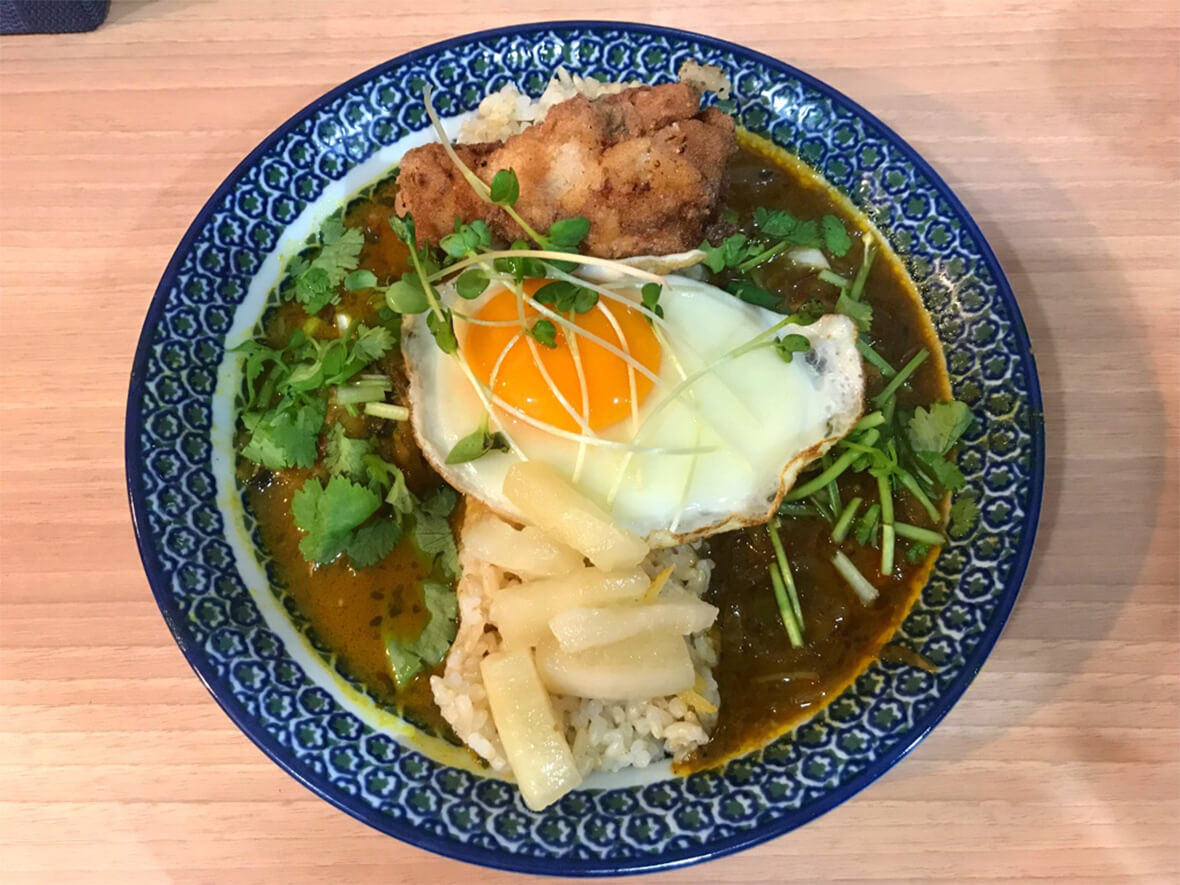
Japanese soup stock is an essential ingredient in the curry at Haraiso Sparkle, where nostalgia and novelty coexist.
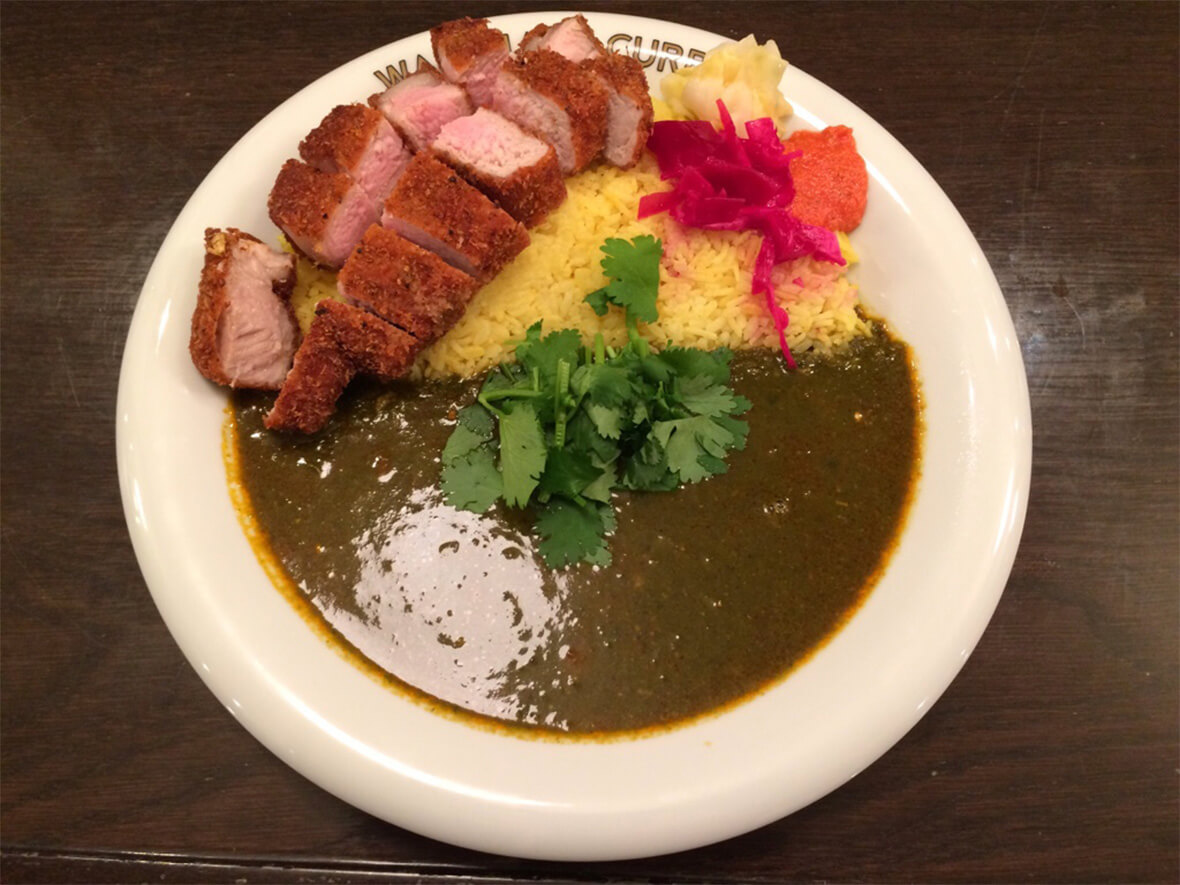
The Katsu Curry at Kitashinchi's Watanabe Curry uses sea bream dashi broth. This is a restructuring of the existing curry culture using Japanese soup stock.
Dashi x Curry frontline being reconstructed
In recent years, the "dashi curry" has been pushed even further, and the "dashi curry" itself has begun to be deconstructed and reconstructed. This is a very serious matter indeed, and a dish that may even transcend the vague concept of "curry" is beginning to emerge.
Take, for example, the notable Osaka restaurant "O-dashi to Spice Ganso Electronica Curry" (a.k.a. Gan Ere). The dashi broth is made from mackerel, iriko (dried sardines), dried shiitake mushrooms, kombu (kelp), chicken bones, and other fish and shellfish. The broth is prepared almost like ramen using a small wooden bowl, giving it a flavor somewhat like ramen soup with the added aroma of spices. It is definitely curry, but it is a unique dish with no other similarity. Furthermore, the second restaurant, "Kai! Electronica Curry" offers a "Dashi Curry Set Meal" style. Whether this is considered a curry or a set meal? Both are correct.
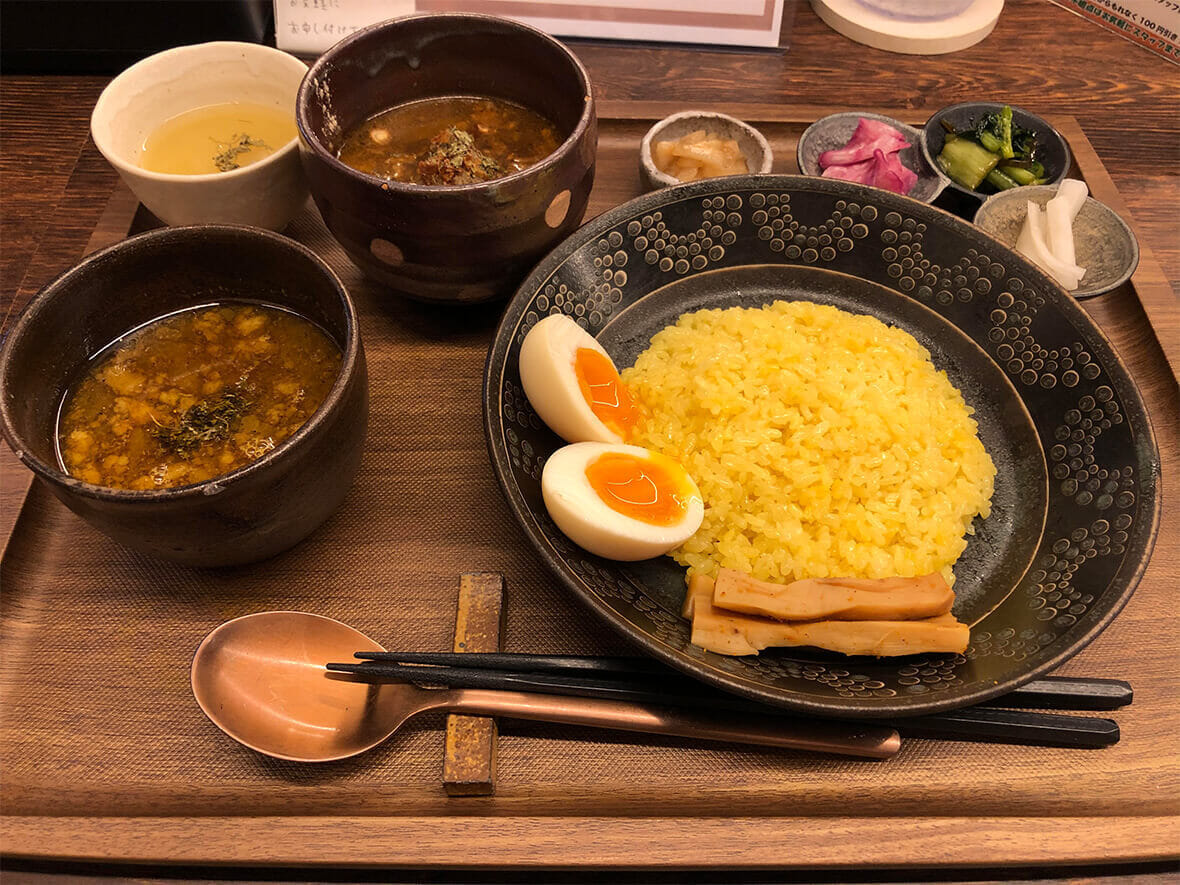
Kai! Dashi Curry Set Meal at "Electronica Curry". The explosion of flavor is amazing!
The new restaurant focuses on "Hagune" (Hagune). The owner, who has more than 20 years of experience in Japanese cuisine, uses his experience to deconstruct and reconstruct curry. The restaurant uses Japanese soup stock as well as Japanese spices such as wasabi and ginger to achieve the perfect combination of "curry but Japanese food" and "Japanese food but curry," and we have high expectations for its future evolution.
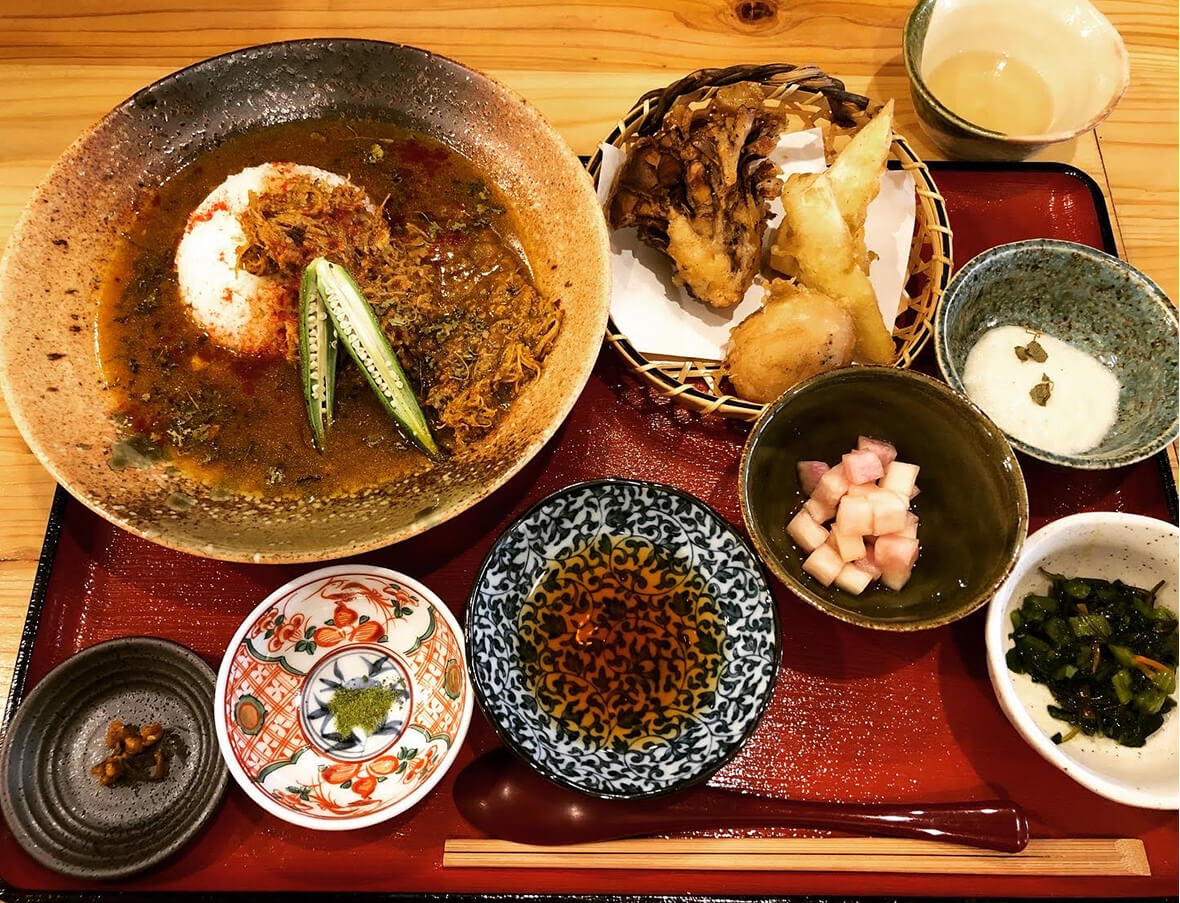
Hagunei Curry Set" with Japanese curry, soup stock, obanzai, grated yam, pickles, and tempura
In recent years, there has been a nationwide movement to reduce salt content and maintain satisfaction with the flavor of dashi broth in order to prevent lifestyle-related diseases and high blood pressure.
It seems that the restructuring of curry with dashi will continue apace.
Now, what kind of Flight should we try next time?
PROFILE

In pursuit of all kinds of curry and strange creatures. A spice radar by nature, he has visited more than 3,000 curry restaurants in Japan and abroad. He has been featured in many magazines and TV programs, and is a member of the Japanese Curry Awards selection committee. He is a member of the Japanese Curry Awards Selection Committee, and is a member of the "Next Breakthrough Curry Restaurant" program, which invites a new local curry restaurant to Shibuya every month.SHIBUYA CURRY TUNEThe company is holding the "Mutual Aid Association of Japan (MAAJ).


